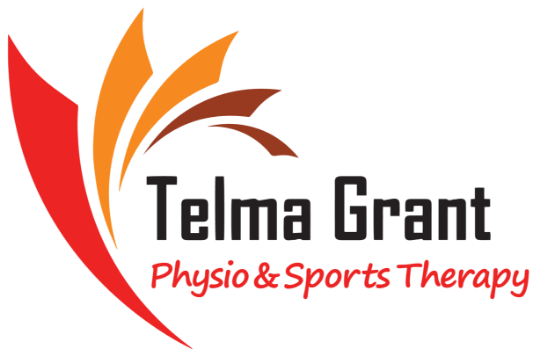Telma Grant Physio & Sports Therapy FAQs
Answers to Common Questions
What types of Physiotherapy do you offer?
We offer:
- Private physiotherapy (all physiotherapists)
- Publicly funded physiotherapy (formerly OHIP)
- WSIB MSK-POC care
- Post-surgical orthopedic rehab (knee, hip, shoulder replacements)
- Strength, mobility, and balance programs for active adults
- Active-aging physiotherapy (40-80+)
- Canine physio & canine rehabilitation through Dog Horse Physio
To book your appointment, call 905-697-8001 or use our online request form.
Do all Physiotherapists see private patients?
Yes. All three physiotherapists provide private physiotherapy.
Only Telma exclusively offers private physiotherapy.
Antony and Priyanka provide:
- Private Physiotherapy
- Publicly Funded Physiotherapy
- WSIB MSK-POC
Private appointments can be booked directly — call 905-697-8001
What happens during my first appointment?
Your physiotherapist will:
- Review your health history
- Assess movement, strength, and mobility
- Discuss your goals
- Create a clear treatment plan
- Begin therapy the same day when appropriate
Wear comfortable clothing you can move in.
You can book your assessment by calling 905-697-8001
Do I need a referral from a doctor?
No — physiotherapists in Ontario are primary care providers.
You can book directly for:
- private physiotherapy
- publicly funded physiotherapy
- WSIB MSK-POC care
Your insurance provider may require a referral for reimbursement.
We help with:
- Shoulder, knee, hip, ankle and back injuries
- Arthritis and joint pain
- Mobility and balance changes
- Post-surgical recovery
- Sports or activity-related injuries
- Workplace injuries (WSIB)
- Strength and mobility changes in active adults and seniors
We also treat dogs through canine physio and canine rehabilitation at Dog Horse Physio.
Call 905-697-8001 to book human Physio and 905-259-2717 to book canine Physio.
What is active-aging Physiotherapy?
Active-aging physiotherapy supports adults 40-80+ who want to stay mobile, strong, and active.
This includes:
- strength and balance training
- mobility work
- injury prevention
- movement retraining
- lifestyle-appropriate home programs
Telma, 64 and highly active, works extensively with clients who want to keep dancing, walking, gardening, and staying independent.
Who provides Publicly Funded Physiotherapy (formerly OHIP)?
Publicly Funded Physiotherapy is provided by:
- Priyanka
- Antony
Eligibility and details follow the provincial Episode of Care model.
To check eligibility or book, call 905-697-8001
The WSIB MSK-POC (Musculoskeletal Program of Care) is a structured program for workplace injuries.
We provide:
- initial assessment
- treatment planning
- progress reporting
- return-to-work coordination
Both Priyanka and Shiju deliver WSIB MSK-POC care.
Call us to get started with a WSIB appointment.
Depending on your needs, treatment may include:
- Strength and mobility training
- Manual therapy
- Instrument-Assisted Fascial Mobilization (IAFM)
- Cupping
- Acupuncture & electroacupuncture
- Balance and gait retraining
- Post-surgical protocols
- Activity-based rehab
- Home exercise programs tailored to your lifestyle
Call (905) 697-8001 to book your assessment.
Common reasons dogs come in:
- post-surgical recovery
- arthritis
- mobility changes
- strength and conditioning
- senior dog mobility support
Learn more: doghorsephysio.ca/
To book canine rehab, call (905) 697-8001 or visit Dog Horse Physio.
We can direct bill many private insurance plans.
Publicly funded physio and WSIB have separate billing requirements handled by our administrative team.
Have billing questions? Call us at (905) 697-8001.
How soon can I get an appointment?
Private physiotherapy is usually available within 1-2 business days.
Publicly funded and WSIB appointment availability may vary.
Call now to book: (905) 697-8001.
234 King St E, Unit 1
Bowmanville, Ontario L1C 1P5
Free parking available at the rear of the building.
We’d love to see you — book your appointment today.

